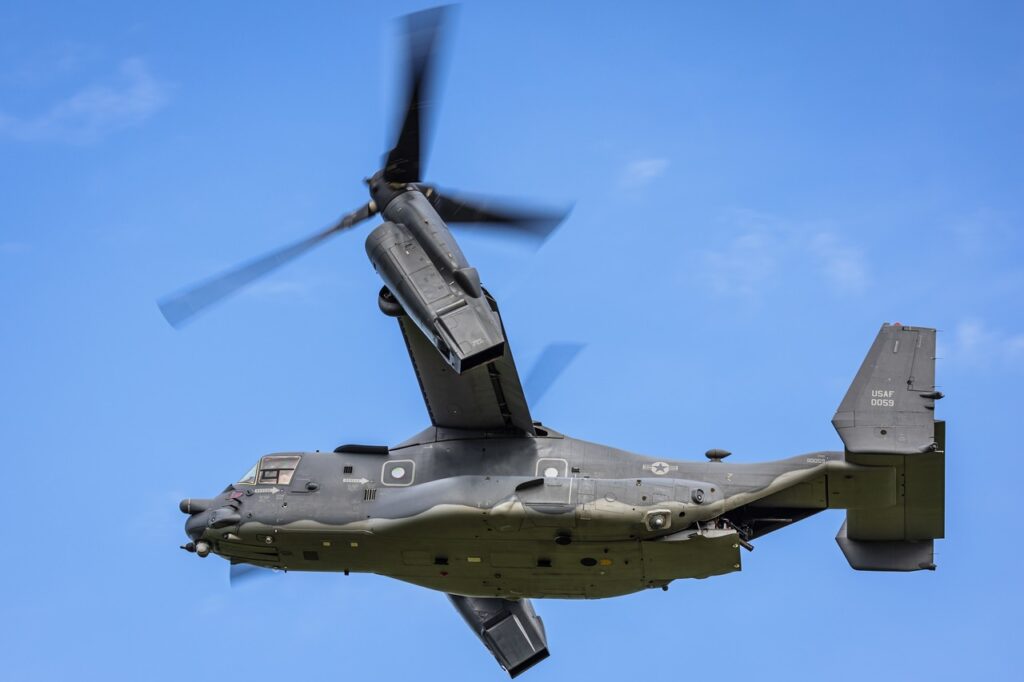
Flying Aircraft Carriers: Was This the U.S. Navy’s ‘Nightmare’ Mistake?
Summary and Key Points You Need to Know: In the 1930s, the U.S. Navy experimented with “flying aircraft carriers” in the form of rigid airships USS Akron and USS Macon. These massive dirigibles carried small F9C-2 Curtiss Sparrowhawk biplanes, which could be launched and recovered mid-air using a trapeze system.
-Designed for coastal patrol and reconnaissance, the airships extended the Navy’s surveillance range.
-However, the Akron-class airships faced numerous accidents, with the Akron tragically crashing off the New Jersey coast in 1933, resulting in 73 deaths. Despite their innovative design, the concept of flying aircraft carriers was short-lived due to these disasters.
The U.S. Navy’s Forgotten Flying Aircraft Carriers: A Tale of Innovation and Tragedy
We were promised flying cars, but were we promised flying aircraft carriers, too?
There are at least five startups currently working on flying cars. These are so-called urban aircraft of some type in a market that could be worth $1.5 trillion by 2040. There are also some who believe flying aircraft carriers could be part of a future mix for the U.S. Navy someday.
But did you know that there were once bona fide operational flying aircraft carriers? Turn back the clock to the early 1930s to learn more about the exploits of these curious flying carriers.
Flying Aircraft Carrier: What Is a Rigid Airship?
The USS Akron and USS Macon were “rigid airships” that served the U.S. Navy. Construction started in 1929. With a three-keel design, the Akron-class dirigibles had a better framework than the original German zeppelins. The eight 560 horsepower Maybach VL-2 engines were positioned inside the airship for easier maintenance and less drag. The propellors remained outside the aircraft and could be folded downward for take-off and landing.
You can watch a video showing the airship’s manufacture and first flight here.
This Cute Little Airplane Served an Important Purpose
Ostensibly for reconnaissance and spying purposes, airships were also configured to carry airplanes such as the F9C-2 Curtiss Sparrowhawk mini-biplanes. These could be launched and recovered from the humongous airship. Only eight of the tiny craft were made to be carried by the Navy’s helium-filled dirigibles. The Navy envisioned the 20-foot-long Sparrowhawks to actually attack the enemy with their .30-inch machine guns and at the very least be used to lengthen the range of the airship.
Flying Aircraft Carrier: Protecting the Homeland
The Akron and the Macon were designed to spot any bogey trying to fly into U.S. airspace or enemy vessel sailing near the coast. The airships and the Sparrowhawks gave better spying range than what was provided by the naval surface fleet. Protecting the homeland by patrolling the coast was the main mission for the airships.
Stunning Exploits With a Flying Trapeze
The Akron had a hangar deck within the airship that included a T-shape with a 75-foot by 60-foot opening for the Sparrowhawks. The airplanes dangled out of the hangar with a curious and dangerous-looking trapeze. It took a talented pilot to maneuver the Sparrowhawk into recovery mode with the sky hook. The National Air and Space museum described the difficulty. “The pilot skillfully guided the overhead hook on the airplane to the horizontal bar of the extended recovery trapeze.

Once the fighter had hooked on, its engine was stopped and the trapeze was raised into the open belly of the dirigible, and the airplane was stored in special racks.”
Bad Luck Akron
The Akron endured deadly accidents and mishaps during its short operational period. Two sailors died during a mooring incident in 1932. There was another accident outside a hangar that year. In 1933, the Akron staged its most significant feat with a flight to Florida, Cuba, and Panama. It tested launch and recovery of its airplanes along the way.
The End of the Flying Aircraft
Then in April of 1933, the worst airship crash in history happened. The Akron was patrolling off the coast of New Jersey when it encountered stormy conditions. Its tail hit the water and the entire ship entered the water and was destroyed. For unknown reasons, the dirigible contained no life preservers and only one raft. The sailors who were not killed immediately drowned or struggled in the cold water and expired due to hypothermia. Seventy-three hands died and then two more men perished when a rescue blimp crashed while looking for survivors. This was worse than the Hindenburg tragedy that only killed 36 people.
The Akron and Macon seemed like a good idea at the time, although the Navy knew the airship had to remain in the rear and depend on its recon airplanes to scout the coast. It would be a fat target for enemy warplanes when flying ahead. Having an eye in the sky to watch over the coastline was going to be valuable though.
Credit should also be given for the amazing feat of launching and recovering airplanes from the airships. The Akron-class dirigibles were at just as high a risk despite the advanced technology that was used during their construction.
Submarines can still see the wreckage of the Akron as it rests on the bottom of the ocean near Atlantic City, New Jersey.
About the Author: Dr. Brent M. Eastwood
Brent M. Eastwood, PhD, is the author of Humans, Machines, and Data: Future Trends in Warfare. He is an Emerging Threats expert and former U.S. Army Infantry officer. You can follow him on Twitter @BMEastwood.
All images are Creative Commons.


